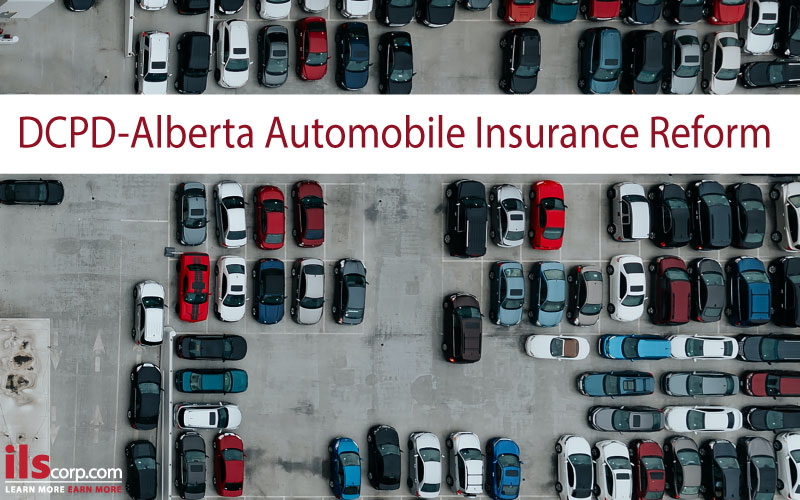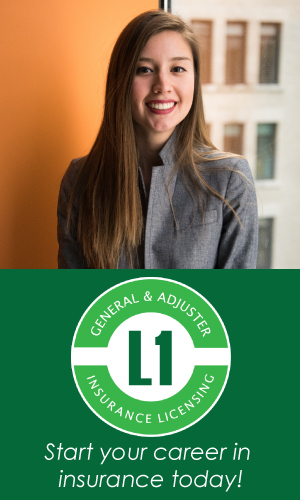Jun 8, 2022 | Alberta CE
FROM THE ALBERTA INSURANCE COUNCIL (AIC)
As the AIC conducts the Continuing Education (CE) Audit, many questions are received in relation to the topics noted below.
As such, we have provided answers to the commonly asked CE Audit questions.
What is the requirement for Continuing Education?
All Life, Accident and Sickness and General Insurance Agents and Adjusters renewing their certificate of authority (license) are required to complete in each certificate term at least 15 hours of the approved continuing education courses. (Section 30(1) of the Insurance Agents and Adjusters Regulation AR 122/2001)
How are candidates selected for the CE Audit?
All Auditees are randomly selected.
How do I know if I have been selected in the CE Audit?
If you have been selected for the CE audit, you will be contacted directly by the Compliance department by way of a Demand for information letter. Upon receipt of this letter, the Auditee is required to provide a copy of their CE certificates as requested.
Where and how do I send my CE certificates?
All CE certificates are sent directly to the Compliance department as a single PDF document to the following email: audits@abcouncil.ab.ca
The email title should include your CIPR number in the subject line.
Could I get an extension to provide the CE certificates?
No extension may be granted. Once a Demand Letter has been sent, the Auditee is required to respond to the Demand by providing all CE certificates within 30 days after receiving the request from the AIC. (Section 31(3) of the Insurance Agents and Adjusters Regulation AR 122/2001)
How long do I have to keep record of my CE certificates?
CE Certificates for completed courses issued by the continuing education provider must be kept for a period of 3 years following the expiry of the certificate. (Section 31(2) of the Insurance Agents and Adjusters Regulation AR 122/2001)
What if I am unable to provide the certificate or have not received it from the CE Provider?
You will need to contact the CE Provider directly to obtain a copy of the CE certificate required for audit submission.
What if I do not respond to the Demand for information letter?
If an Auditee does not respond to the CE audit in time or at all, the certificate of authority will be automatically suspended until the demand is complied with, and the matter may proceed to an investigation.
(Section 31(3) of the Insurance Agents and Adjusters Regulation AR 122/2001)
What happens if I fail the CE audit?
If you have failed to provide the CE certificates as required, the certificate of authority will be automatically suspended, and the matter may proceed to an investigation.
How do I reinstate my license after it has been suspended?
When the certificate of authority has been suspended, the Auditee must complete the audit requirements. Once the audit requirements are met the Auditee may contact the Licensing department to apply for their license. (Section 472 of the Alberta Insurance Act, R.S.A. 2000, Chapter I-3)
How will I know when I have passed the CE audit?
The Compliance department will issue a Pass letter to all Auditees via email once the audit requirements have been reviewed and met.
If you have any further questions in relation to the CE Audit, please contact the compliance department at: audits@abcouncil.ab.ca.
Feb 14, 2022 | Alberta CE, General CE
Two new Alberta Auto courses now available to all ILScorp General CE Subscribers.
Alberta Personal Automobile Insurance and Alberta Commercial Automobile Insurance
Both courses are included in the ILScorp General CE Course Subscription
About the Alberta Personal Automobile Insurance CE Course
Introduction
Once cars were on the road, people realized that automobiles posed risks for pedestrians and private property, as well as potential losses for drivers and owners. Insurance products were developed and governments created laws and regulations cover the operation of such vehicles and to enhance public safety. Over the years the insurance products as well as the laws and regulations became increasingly complicated.
Purpose
The purpose of this course is to explain the various aspects of automobile insurance and of the laws and regulations that govern the industry, particularly in Alberta.
Course Content
This course covers the following Subjects:
What is Automobile Insurance?
Private and Government Automobile Insurance
Regulation of Automobile Insurance in Alberta
Standard Application Form for Owners of Automobiles (SAF 1)
Standard Policy Form for Owners of Automobiles (SPF 1)
SPF 1 Policy General Provisions, Definitions, and Exclusions
Standard Endorsement Form (SEF)
Standard Policy Form for Drivers of Automobiles (SPF2)
Residual Risks and Industry Agreements
Course Learning Objectives
The successful participant in this course will:
- Be able to explain how automobile insurance is provided in Canadian jurisdictions, including direct compensation property damage plans
- Be able to list and briefly describe approved automobile policy forms in Alberta and their purposes
- Competently identify the statutory conditions required in Alberta automobile policies and understand the obligations of each condition
- Demonstrate an understanding of third-party liability coverage under an Alberta Standard Owners Automobile policy, including how it applies
- Clearly describe coverages provided under accident benefits on an Alberta Standard Owners Automobile policy
- Be able to summarize available options under loss of or damage to insured automobile coverage on an Alberta Standard Owners Automobile policy
- Recognize situations where policy provisions, definitions, or exclusions apply
- Demonstrate an understanding of common endorsements used with personal automobile policies in Alberta
- Possess the understanding to differentiate between available programs that deal with residual risks
- Be aware of the history and purpose of automobile insurance
- Know the difference between Private and Government Automobile Insurance
- Be aware of the range of differences in insurance in different provinces
- Understand the nature of reciprocal agreements
- Understand the concept of no-fault insurance (Direct Compensation Property Damage (DCPD) Agreements)
- Be familiar with the use of fault charts or fault determination rules
- Be familiar with Regulation of Automobile Insurance in Alberta regarding Mandatory Coverages
- Demonstrate an understanding of the nine statutory conditions that must be included in all automobile insurance policies
- Be familiar with the Standard Policy Forms (SPF), Standard Endorsement Forms (SEF), and Standard Application Forms (SAF)
- Be able to identify the Government Questions (Mandated Under Legislation)
- Be able to identify the Industry Questions (Required by Insurers)
- Be familiar with the details of the Standard Policy Form for Owners of Automobiles (SPF 1) Sections A, B, and C
- Know the purpose and requirements of the Standard Endorsement Form (SEF) and other miscellaneous endorsements
- Be familiar with the details of the Standard Policy Form for Drivers of Automobiles (SPF2)
- Be knowledgeable about Residual Risks and Industry Agreements
- Know the purpose of the Facility Association and how it operates
About the Alberta Commercial Automobile Insurance CE Course
Introduction
People not familiar with commercial transport of goods and passengers may have only limited knowledge of the types of vehicles involved and the variety of related issues and risks. This is a complex area of the auto insurance industry in which professional agents and brokers need to be knowledgeable and fluent.
Purpose
The purpose of this course is to familiarize participants with the issues and risks that are part of owning and operating commercial automobiles, and to prepare them to identify particular client needs and suggest policies that will appropriately meet those needs.
Course Content
This course covers the following subjects:
Commercial Automobile Defined
Explanation and particulars relating to Fleet Insurance and the Standard Policy Form 1-Owners Form
Explanation and particulars relating to Standard Policy Form 4 – Garage Automobile Policy (The 6 sections A-F)
Standard Policy Form 6―Non-owned Automobile Policy
Standard Policy Form 9-Transport Network Policy
Common Commercial Automobile Endorsements
Fleet Policy Endorsements
Garage Policy Endorsements
Risk and Liabilities that face owners of commercial automobiles
Course Learning Objectives
Participants who successfully complete this course will:
- Be able to recognize and describe types of commercial automobiles
- Be able to illustrate how a standard owner’s automobile policy can be used to insure automobile fleets
- Understand the types of businesses that require a garage automobile policy and how the coverages provided meet the needs
- Be able to explain the purpose of a non-owned automobile policy and describe the third-party liability coverage provided
- Demonstrate an understanding of when a transportation network automobile policy is required and how the coverages differ from a standard owner’s automobile policy
- Competently identify and describe policy endorsements commonly used with commercial automobiles including automobile fleets, and garage automobile policies
- Be able to explain why each different type of policy and endorsement is needed
- Know the particulars and the details, the coverages and exclusions, of each type of policy and endorsement

Jan 6, 2022 | Alberta CE
DCPD Alberta Automobile Insurance Reform
New Alberta DCPD CE course now available to all General and Adjuster CE Subscribers.
Credit Hours: 1
Credit Type: General/Adjuster – Technical
Credit #: AIC#59902
Introduction
It is often said that the only constant is change. This is certainly true in the insurance industry. Data analysis of historical trends and patterns keeps us striving for greater efficiencies and improvements to products and services. The province of Alberta has enacted legislative and regulatory changes to Alberta automobile policies through Bill 41which introduces Direct Compensation for Property Damage (DCPD). On January 1, 2022, all automobile insurance policies in Alberta will automatically have new DCPD coverage added. The changes made have been taken to improve Alberta’s auto insurance system to ensure sustainability for industry, allow optimal insurance options at reasonable prices for consumers and offer drivers more consistent treatment and faster response on collision claims.
Purpose
The purpose of this course is to provide background and specific details relating to the Direct Compensation for Property Damage (DCPD) changes that will impact Alberta automobile policies as of January 1, 2022. This goal is addressed through a comprehensive review of the previous regulation changes, the upcoming legislative changes, and a discussion of what DCPD will mean for drivers.
MORE INFO
Course Contents
This course will cover the following topics:
Brief background to the reforms
Review of regulation changes including:
Minor Injury Regulation
Diagnostic and Treatment Protocols Regulation
Automobile Accident Insurance Benefits Regulation
Automobile Insurance Premiums Regulation
Changes to Automobile Insurance Rate Board (AIRB)
What DCPD will mean for drivers
Changes to claims processing and coverages
Upcoming changes (through Bill 41) in early 2022
Driver responsibilities when involved in an accident
Assignment of fault
How insurance premiums are affected by DCPD
Accident examples
DCPD Summary of Frequently Asked Questions
Concise review of how DCPD works
Course Learning Objectives
Successful participants of this course will:
- Understand what factors influenced the changes to Alberta’s automobile insurance
- Know the details regarding the above changes to
Making rates more affordable
Improving care
Providing more choice for drivers
- Be aware of the changes to the role authority of the AIRB
- Be familiar with upcoming legislation changes: specifically, the contents of Bill 41: the Insurance (Enhancing Driver Affordability and Care) Amendment Act, 2020 Know who owners will work with in relation to claims
- Know what it means if the driver bears no fault in the accident
- Know what Collision coverage will pay for
- Know what coverage is available for medical and rehabilitation costs
- Know the responsibilities of a driver involved in an accident
- Understand how insurers assess responsibility in an accident
- Know what information insurers will collect about an accident
- Understand what will be (and can be) factors and procedures in the process of assigning fault
- Know how insurance premiums are affected
- Have reviewed accident examples based on the Direct Compensation for Property Damage Regulation in the following circumstances:
Automobiles travelling in same direction and same lane
Automobiles travelling in the same direction and adjacent lanes
Automobiles travelling in the same direction and adjacent lanes – overtaking or passing
Automobiles travelling in opposite directions
Automobile entering highway from parking place or private road or driveway
Automobile entering controlled highway
Chain reaction accidents
Intersections without traffic signs or traffic control signs
Intersections with traffic signs
Intersections with traffic control signals
Parking lots
Parked automobiles
Driver fails to obey sign or direction
Backing up or making u turns
Open doors
- Know the benefits of DCPD
- Know the answers to questions frequently asked by clients about changes to coverages, claims process, and premiums
Jun 10, 2021 | Alberta CE
If you leave your CE to the last minute, you’re likely to be audited.
Did you know that the insurance councils of Alberta audit licensees who complete their CE at, or near, the end of the renewal deadline.
|
|
Family, business, or other reasons may require you to travel outside of Canada during the pandemic. This course will outline and explain TuGo’s COVID-19 insurance coverage, including COVID-19 emergency medical and related quarantine expenses, or what happens if you test positive for and are diagnosed with COVID-19 while on your trip.
|
|
Credit Hours: 1
BC, SK, MB, ON Credit Type: General/Adjuster – Technical / RIBO – Technical / Life/A&S – Technical
AB Credit Type: General – Technical / A&S – Technical
|
|
Understand the purpose and scope of the Guidance document.
Be able to explain the way the conduct of insurance business is supervised.
Know the importance of acting in compliance with the laws, regulations and guidelines to which representatives are subject.
|
|
|
Credit Hours: 2
BC, AB, SK, MB, Credit Type: General/Adjuster – Technical / Life/A&S Technical
RIBO Credit Type:1 RIBO -Management and 1 RIBO-Ethics
|
|
Continuing Education Course Subscriptions
|
|
|
|
Purchase or renew your insurance continuing education course subscription to complete your mandatory CE requirements online now.
|
|
|
|

Jun 1, 2020 | Alberta CE
June 30 is the CE Credit Deadline for all
Alberta Insurance Licensees
Life and Accident & Sickness insurance agents, General insurance agents and Adjusters who hold a license in Alberta must obtain 15 hours of continuing education credits as a condition of renewing their insurance license.
Alberta Insurance licensees are required to demonstrate that they have completed 15 hours of approved continuing education courses for each class of license being renewed by entering all approved courses under their AIC profile. The AIC will conduct random audits to determine that certificate holders are in compliance with these requirements. All certificate holders must keep a copy of their CE certificates issued by a continuing education provider for a period of 3 years following the expiry of the certificate term and must provide a copy of those records when they become part of a random audit.
ILScorp offers AIC approved, online continuing education courses for Life and Accident and Sickness agents, General agents and Adjusters. Courses are completed entirely online and certificates are generated immediately. Your CE certificate will display your name, your CIPR number, the course title, date of completion, CE category and CE credit value and the AIC Accreditation Number. ILScorp keeps a copy of your competed CE certificates on file for up to 7 years in case of audit. We have found that those licensees who complete their CE requirements in the last few weeks before the June 30th deadline are more likely to be audited.
Get your CE credits done now from the office or from home!
Where ever you have an internet connection, you have access to approved CE.
CE COURSES
How do I know that I have satisfied my CE requirement and how do I enter my completed CE courses?
You must log in to AIC and check your CE Summary Report. You are required to complete courses that have been approved by the AIC for CE hours in order to process the renewal of your license. All approved courses can be found in the CE Course Lookup Section on the AIC website. Contact ILScorp directly for assistance if you are unable to find a course. For help on how to enter your courses, check out the How To tutorial on the AIC website “How to Add CE courses or view CE status.”
I am a non-resident agent/adjuster. Do I have to satisfy CE requirements in Alberta to renew my license?
If you currently hold a license in your resident jurisdiction for the same class of insurance license that you hold in Alberta and if you have satisfied the CE requirement in your resident jurisdiction for which you are not exempt, you will have satisfied Alberta’s CE. You will be required to report your non-resident license number on the CE status page to receive the CE exemption. A list of jurisdictions that have been determined to have a satisfactory CE requirement is posted on the AIC web site. If your jurisdiction is not listed, then you must satisfy Alberta’s CE requirement.
If I do not renew my license on-line by June 30th, is there a grace period or can I pay a late penalty/filing fee?
There is no “grace period.” Once your certificate has expired automatically on June 30th, you are no longer authorized to act as an insurance agent/adjuster until a certificate has been issued. You will be required to submit a new on-line application that is approved by your recommending insurance company or Designated Representative (as applicable), and submit it with the appropriate fee payment
May 5, 2020 | Alberta CE
The Alberta Insurance Council (AIC) and the insurance industry have been deemed essential services and as such, the AIC will resume the scheduling of exams beginning on Monday, May 4th. Examination sittings will be offered for Edmonton and Calgary AIC office locations only.
For the safety of the staff, exam candidates, and proctors each examination sitting will be restricted to 10 candidates. Social distancing of 2 meters or 6 feet must be maintained at all times. All students must wear a mask or face covering over mouth and nose. We will be checking all exam candidates for signs of fever prior to admittance into the exam. All exam candidates must complete declarations and waivers prior to arriving at AIC offices.
By registering for an examination, all Examination Candidates hereby agree to adhere to Alberta Health and the Alberta Insurance Council safety protocols. Examination Candidates are required to declare that they are healthy, do not fall into a COVID-19 high risk group, and must complete a waiver releasing the AIC from all coronavirus related liability.
Details of these mandatory requirements and examination scheduling changes can be found on the AIC website.










